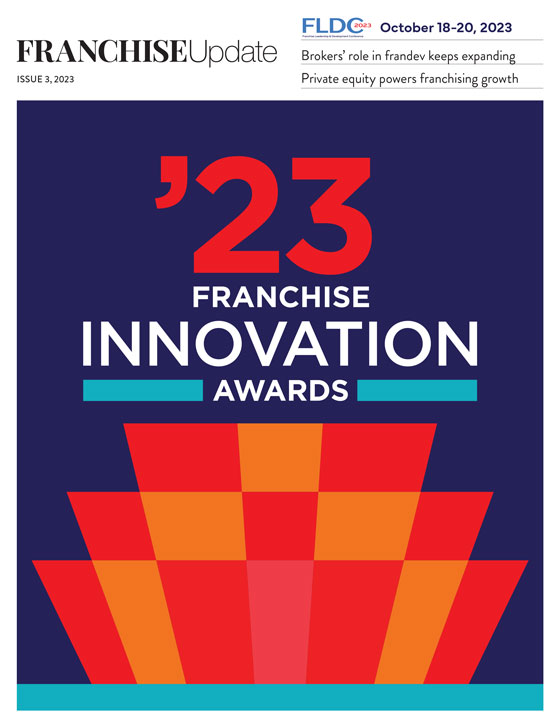How To Use Short-Form Storytelling To Boost Your Brand

Storytelling is the essential part of human communication. From ancient cave paintings to TikTok videos, great stories have always captivated us, evoked emotions, and conveyed powerful messages.
As a brand, great stories make you rise above your competitors. While many complain about the ever-changing social media algorithms and landscape, social media is where successful marketers win by telling stories.
But what sets apart a great story from a forgettable one? What are the key elements that make storytelling truly impactful? Let’s explore the vital components that contribute to the art of good brand storytelling.
1) The hero
At the heart of every compelling story is a memorable and relatable hero who draws your audience into your narrative. Characters should possess depth, have clear motivations, and undergo transformation at some point in the story.
Who is the hero in your brand’s story? It’s not you. And that’s the secret. Your stories must focus on your customers, not yourself or your business.
So many marketers working for franchise brands and nearly all agencies in this space get this wrong. They think storytelling is all about sharing the history of the brand. However, your audience does not care about how you started your company, what you did before, or how many things you’ve sold. That’s lazy, uninspired storytelling. Your audience wants to know what you can do for them.
If you’re a franchisee, the hero of your story is a customer. If you’re a franchise industry supplier, the hero of your story is a franchisor. And if you’re a franchisor, the hero of your story is a franchisee. That’s the great thing about scaling a franchise business: more units, more stories.
So, what’s your role in the story? You’re here to help the hero. You’re in the story to provide guidance, a plan, or tools to be successful.
If your brand is Star Wars, you’re not Luke Skywalker. You’re Obi-Wan Kenobi. If your brand is Camelot, you’re not King Arthur. You’re Merlin. If your brand is The Godfather, you’re not Don Corleone. You’re the consigliere.
Your voice as the storyteller should be empathetic. The story is not about what you want, but what your hero and your audience want. Your voice should also be authoritative to lend credibility and add depth to the storytelling experience.
2) The conflict
Conflict is the driving force behind any story. A well-crafted conflict moves the narrative forward and keeps the audience engaged, wondering how it will be resolved. It will force your hero to grow, adapt, and overcome. The conflict is where you hook the audience. This is where your audience puts themselves into the story.
If you know your audience, creating an interesting conflict should be the easiest part of writing your story. What problem does your audience have? Without this problem, the audience won’t want to hear or read the story—and they won’t need you or your brand.
3) The plot
A captivating plot is the backbone of any story. Even if we’re talking about very short videos on Instagram, TikTok, or YouTube Shorts, it should have a well-defined structure with a clear beginning, middle, and end. The plot should present the conflict the hero must overcome, creating suspense. A good plot keeps the audience engaged and eager to learn what happens next.
With short-form videos and other short social media content, it’s more crucial than ever to boil a story down to its most important parts. That’s the key to storytelling in an age of decreasing attention spans and exponentially increasing noise on all social media platforms.
4) The impact and resolution
Stories that touch the audience’s emotions have a lasting impact. Emotionally resonant storytelling can make your customers laugh, cry, or, most importantly, feel inspired to take action. Whether it’s a heartfelt dialogue in a short video, a poignant moment in a podcast, or a persuasive image on Instagram, evoking genuine emotions can elevate your brand story.
The resolution should be satisfying and provide closure. The resolution should also lead to the audience wanting to replicate that story, focusing on themselves.
Jack Monson is the CEO of Brand Journalists and has been helping franchisors and franchisees with digital marketing for 15 years. He is also the owner and host of Social Geek, home of the top podcasts in franchising, including “The Franchise News Podcast” and “Social Geek Rock Stars.”
Share this Feature
Recommended Reading:
FRANCHISE TOPICS
- Multi-Unit Franchising
- Get Started in Franchising
- Franchise Growth
- Franchise Operations
- Open New Units
- Franchise Leadership
- Franchise Marketing
- Technology
- Franchise Law
- Franchise Awards
- Franchise Rankings
- Franchise Trends
- Franchise Development
- Featured Franchise Stories
FEATURED IN

Franchise Update Magazine: Issue 3, 2023








 The franchise listed above are not related to or endorsed by Franchise Update or Franchise Update Media Group. We are not engaged in, supporting, or endorsing any specific franchise, business opportunity, company or individual. No statement in this site is to be construed as a recommendation. We encourage prospective franchise buyers to perform extensive due diligence when considering a franchise opportunity.
The franchise listed above are not related to or endorsed by Franchise Update or Franchise Update Media Group. We are not engaged in, supporting, or endorsing any specific franchise, business opportunity, company or individual. No statement in this site is to be construed as a recommendation. We encourage prospective franchise buyers to perform extensive due diligence when considering a franchise opportunity.